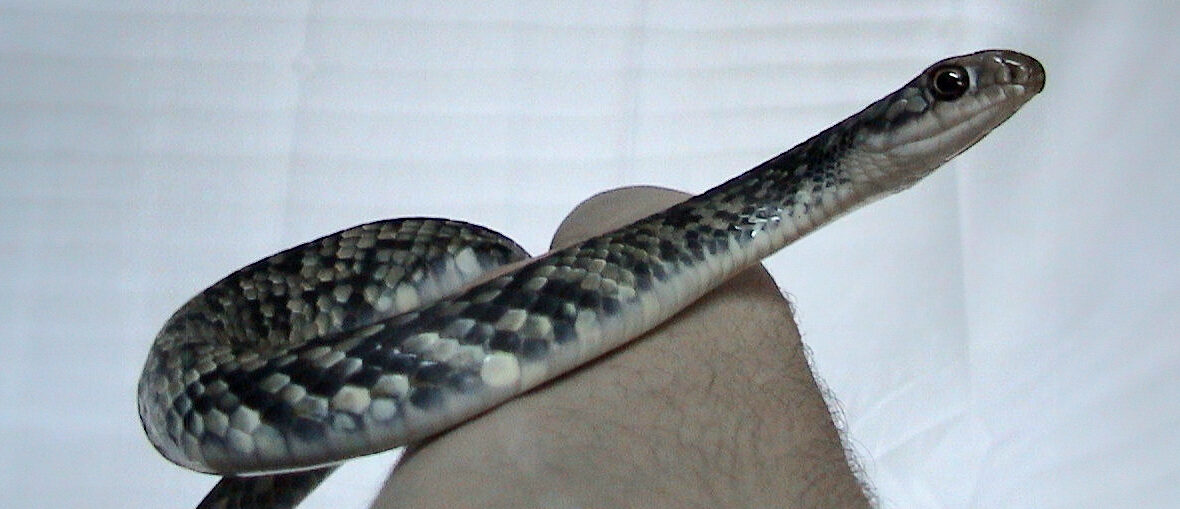
The eastern racer, aka North American racer, can be found throughout much of the United States, parts of Canada, Mexico, and into Central America. Due to the commonality of these serpents, and the fact that the only threats they face are partial habitat loss and/or destruction at the hands of the agricultural industry, these snakes are listed as Least Concern by the IUCN. Their numbers are also stable throughout their range.
First the Stats…
Scientific name: Coluber constrictor
Weight: Up to 1.23 lbs.
Length: Up to 5 feet
Lifespan: Up to 10 years
Now on to the Facts!
1.) These snakes are fast and highly active.
2.) They are diurnal (active during the day).
3.) Adult eastern racers prey on mice, rats, voles, gophers, moles, frogs, toads, lizards, small birds, bird eggs, and even small turtles.
4.) Juvenile racers prey on soft-bodied invertebrates, juvenile mice, juvenile rats, shrews, small frogs, smaller sized lizards, and small & juvenile snakes.
5.) Contrary to their specific name, constrictor, they do not actually engage in constriction, rather they simply subdue their prey by pinning it with their body, pressing 1 or 2 coils against it to hold it in place instead of suffocating it. Most smaller prey items are just swallowed alive.
But wait, there’s more on the eastern racer!
6.) With their superb vision, they are often times seen engaging in a behavior known as periscoping. This is where they will raise their head above the ground to get a better view of their surroundings.
7.) While they prefer to flee in the face of danger, if cornered, they will put up a heck of a fight; biting vigorously and often.
Did you know…?
Eastern racers are nonvenomous snakes and are not to be feared. They can’t harm you, sans biting you when mishandled.
8.) If handled, they will not only bite, but they will defecate, squirm, and musk (release a foul-smelling liquid from their cloaca – anus). The musk, such as in all musking snakes, takes a long time to wash off and smells terrible!
9.) In an act of mimicry, these snakes will often rattle their tail in leaves to appear as though they are a rattlesnake.
10.) They’re typically found near a water source. They also prefer grasslands, light forests, brush habitats, trash piles, roadsides, and swamps, and in suburban habitats. They are the most commonly found snake near homes in Florida.
But wait, there’s still more on the eastern racer!
11.) Even though they are mostly terrestrial (spend their lives on the ground), they can also climb very well and often do so to prey on birds, their chicks, & eggs.
12.) Mating takes place from April – June.
13.) Up to 1 month after copulation, the female will lay up to 30 eggs in a nest site like an abandoned rodent burrow, a hollow log, or under a rock
14.) Newborn snakes measure up to 10 inches, and like all snakes, they are precocial (totally self sufficient).
Now a Short Eastern Racer Video!
This video talks about the black racer.
Be sure to share & comment below! Also, check out the Critter Science YouTube channel. Videos added regularly!
Want to suggest a critter for me to write about? Let me know here.
Some source material acquired from: Wikipedia & IUCN
Photo credit: Dawson



